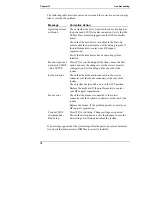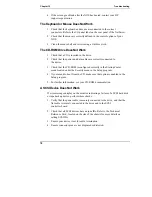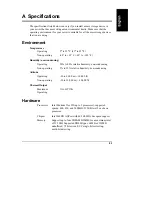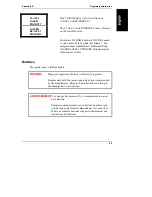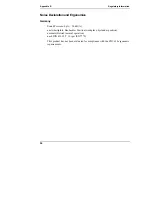
Appendix B
Regulatory Information
88
•
Reorient or relocate the receiving antenna.
•
Increase the separation between the equipment and the receiver.
•
Connect the equipment into an outlet on a circuit different from that to
which the receiver is connected.
•
Consult the dealer or an experienced radio/television technician for help.
Hewlett-Packard's system certification tests were conducted with HP-supported
peripheral devices and HP shielded cables, such as those you receive with your
computer. Changes or modifications not expressly approved by Hewlett-Packard
could void the user's authority to operate the equipment. Cables used with this
device must be properly shielded to comply with the requirements of the FCC.
Class A Equipment
This equipment has been tested and found to comply with the limits for Class A
digital devices, pursuant to Part 15 of the FCC Rules. These limits are designed
to provide reasonable protection against harmful interference when the
equipment is operated in a commercial environment. This equipment generates,
uses, and can radiate radio frequency energy and, if not installed and used in
accordance with the instructions manual, may cause harmful interference to radio
communications. Operation of this equipment in a residential area is likely to
cause harmful interference in which case the user is required to correct the
interference at their own expense.
Class A Accessories
Installation and use of a Class A accessory creates a system that meets the
requirements for industrial and commercial environments. If you are installing a
class A accessory in a system that has been labeled as a class B product, the
requirements and notice for class A equipment shall be applied.
Notice for Canada (Industry Canada)
This digital apparatus meets all requirements of the Canadian Interference-
Causing Equipment Regulations.
Cet appareil numérique respecte toutes les exigences du Règlement sur le
matériel brouilleur du Canada.



